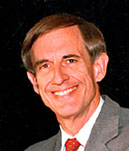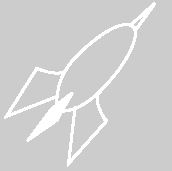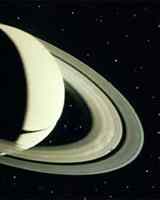|
Charles Kohlhase
–
planetary mission designer
|

|
"
Old school chums recall my lying in the cool night grass gazing at the stars when I was only 12."
|

|
| |
|
|
|
| |
How were you motivated to choose your particular field? |
| |
My grandmother regularly told me adventure stories when I was very
young, and I later read and relished many books, mostly science fiction,
science fact, and adventure stories like The Count of Monte Cristo and
The Three Musketeers. Reading is a marvelous way to be inspired by many
different creative people. An uncle taught me how to build model
airplanes (many that flew) and other neat things. During WWII, I ate
lots of cereal to get at the enclosed paper airplanes which I eagerly
assembled, then dreamed of flying. At age 11, I taught myself Boolean
algebra and used it to design a small puzzle-solving machine. In high
school, one inspirational teacher taught me to enjoy math and to reason.
Stir in a tough father who knew everything except for math and science,
and you can see why I chose physics in college and space exploration
(the ultimate adventure) after graduation.
Sometimes, I found myself wishing to escape from regimented family life
and the private military academy to which I had been sent, but the
education outweighed the excessive discipline. Old school chums recall
my lying in the cool night grass gazing at the stars when I was only 12.
I was a dreamer with much curiosity and a vivid imagination. My father
told me that I was making the "greatest mistake" of my life in later
choosing science, but I'm happy that I found the courage to follow this
dream anyway. The work was challenging, exciting, and historic, but it
made the 40 years pass far too quickly. At all times, be honest with yourself.
|
|

|
| |
|
|
|
| |
What can you share about your creative process? |
| |

|
|
On the question of vision and creativity, a solid education and a good
imagination are essential, allowing one to think both within and outside
of the customary box. The key is "rational imagination". Having built
lots of scale models and done much photography, I also used
visual–spatial skills to mentally "see" coordinate systems and the
various spacecraft orbits around different planets. In my mind's eye,
Earth usually appears about the size of a basketball. When designing
missions to other planets, it is crucial that one understands how
everything fits together.
Training in math (particularly probability theory and computer
programming) helped me to logically see all outcomes for any problem and
then pare them down to the few that really mattered. Nothing must be
overlooked. It is akin to the job of an architect or an expedition
leader. You establish the objectives and assumptions up front, then
work the problem systematically to its conclusion. Long years and long
days of schooling and working problems in space mission design allowed
me to develop a strong and quick technical intuition. I almost always
knew within minutes whether a colleague's work of months was correct or
not. In hindsight, though, I wish that I had been less competitive and
more human.
It was great fun to figure out the science and mission performance
requirements to place on each spacecraft design, when to launch, how to
perform accurate deep–space navigation to reach the destination world,
and how to gather and return the scientific data to Earth. I was
absolutely passionate about this work, often awaking at dawn with the
answer to a problem from the day before. Leading the design of the
Voyager Grand Tour mission was the happiest experience of my
professional life. It offered tons of inspiration to a person already
self-motivated. It forever locked in an attitude of "carpe diem" –
seize the day!
Many years earlier, not long after I had begun work at JPL in 1959, I
had the unforgettable experience of meeting Wernher von Braun, being
awed by his intellect, and being moved by his unwavering purpose. We
all stand on the shoulders of those who have passed before, and we owe
them a great debt of thanks.
|
|
| |
|
|
|
| |
What ideas do you have for a future human community on Mars?
|
| |
Turning to the Martian village, several ideas are suggested. We must
shuck this ludicrous volume of legal and tax baggage that stifles us
here on Earth. Let's return to a few basic and simple laws that can be
administered without lawyers. Take, for example, the ten commandments,
or Asimov's three Laws of Robotics, or other simple conduct rules. It is
easy to determine whether one of these principles is ever broken. It is
imperative that we simplify how we function in a new community. We must
expend considerable time and effort to design a remote village that can
exist as an enjoyable place to call home. A strong systems designer
should oversee and coordinate the effort, but that person should include
many different creative thinkers and feelers on his or her team.
Artists and scientists must work together to create a unique and viable
community. The interplay of light and color, of interesting positive
and negative spaces, of spectacular vistas, and of music and other
cultural cuisine are essential. The ability to access information and
communicate with anyone elsewhere in the solar system is vital. The
most versatile psychologists must be available to deal with emotional
problems when they arise. A "holodeck" (as in Star Trek) is likely a
necessity. These are some of the most important matters to consider.
|
|

|
|




